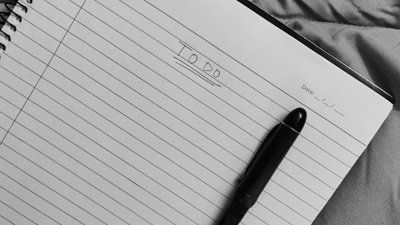Once a year or so, I compile my “wish list” for the industry, the changes---in some cases, long-awaited changes---I’d like to see happen to help our industry. As always, I challenge you---whether you represent a collision repair business, an insurance company, an automaker, an association or an industry vendor---to find a way to contribute to making these 10 wishes become reality.
Wish No. 1: Automakers should change the antiquated way they require dealership collision centers to report their financials.
Most independent body shops actually have a competitive advantage over dealership body shops when it comes to examining and analyzing their financials to determine where there are areas for profitability improvement. That’s because independent body shops generally use QuickBooks or BusinessWorks or a shop management system from which they can get very detailed accounting with sub-accounts.
Unfortunately, a lot of dealership shops have to rely on the more limited financial data they get from the dealership’s management system, or are required by the auto manufacturer to report their financials in a certain way. That can make it harder for shop managers to compare their financial performance against collision repair industry benchmarks. I’d like to see this change.
I also believe dealership body shops also should get credit for the parts sales they contribute to the dealership’s overall business. When they don’t, it negatively skews the true financial performance of the shop.
Wish No. 2: Some entity in the industry needs to take the lead in developing a clear technician career path and apprenticeship training.
The technician shortage isn’t going to get solved until there’s an easier and better way for every shop to grow its own new technicians. We need some organization---I-CAR or an automaker, for example---to put together a program that does that.
Wish No. 3: All collision repair shops should inspect the seat belts in every vehicle they repair, every single time.
OK, body shops, so far on this list, I’ve left you off in terms of responsibility for making this stuff happen. But this one is totally on you. I don’t see the post-crash seat belt inspections that are called for in the OEM procedures---and even in most vehicle owner’s manuals---being done consistently enough.
Don’t tell me the insurers won’t pay for it. Our “Who Pays for What?” surveys prove that’s not true. But even if you’re not paid for it, it’s your moral obligation to do the right thing and perform those seat belt inspections every time. You owe it to your customers.
Wish No. 4: Every technician should perform weld destructive testing prior to welding on any vehicle.
Again, I’ve seen first-hand the improper welds that can be made when this mandatory step is skipped. It disheartens me when I travel 300 days a year and see how many technicians and shops aren’t doing this every time. Shops needs to look in the mirror and start holding people accountable for doing the right thing. Automakers need to make this part of their auditing of certified body shops.
Wish No. 5: Insurers and the automakers need to stop leaving shops in the middle of the friction related to vehicle safety inspections.
Most automakers have clear requirements for the safety inspections, in addition to checking seat belts, that must be performed on their vehicles after a crash. These requirements---which can include measuring the steering column, checking SRS connectors, etc.---are the single biggest friction point in the collision repair industry today.
Insurers say they don’t want to pay for this work. Uneducated dealerships and even some certified shops are saying it doesn’t need to be done. That leaves the shops trying to do the right thing stuck in the middle.
My wish is that insurers and the automakers would sit down and get this figured out, and take shops out of the middle. It’s wrong on all accounts.
Wish No. 6: All automakers need to make one-time-use parts more easily identified.
Some OEMs have symbols in their documentation---which then gets into the estimating systems---identifying which parts must be replaced as part of the collision repair process. Toyota uses a black dot, for example, and Nissan a black dot with a white X. My wish is that every automaker would use a symbol for one-time-use parts in order to be make them easily identifiable.
Wish No. 7: All shop management systems need to make it easy to ensure proper coding from an accounting perspective for parts that are price-matched.
This one has been on my list for a number of years. If a shop uses an OEM part instead of a non-OEM part, it doesn’t always get coded properly, sometimes because of an insurer requirement as part of a direct repair program. This creates an accounting nightmare, with OEM parts gross profit being understated, and aftermarket part gross profit being overstated.
Our team works with the financials for more than 400 collision repairers, and I can tell you the No. 1 issue we see is that parts don’t get coded properly. There has to be a better way.










Mike Anderson